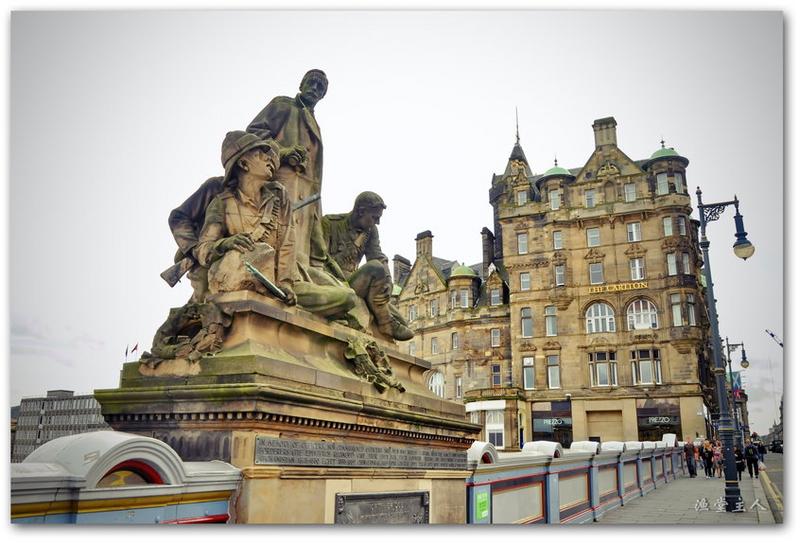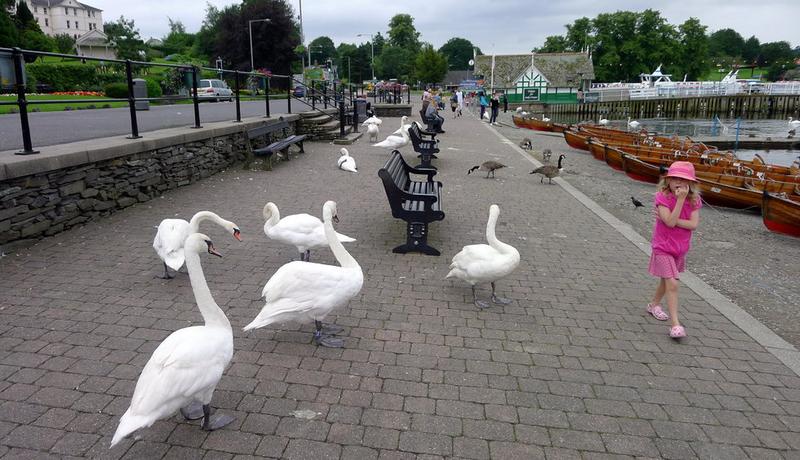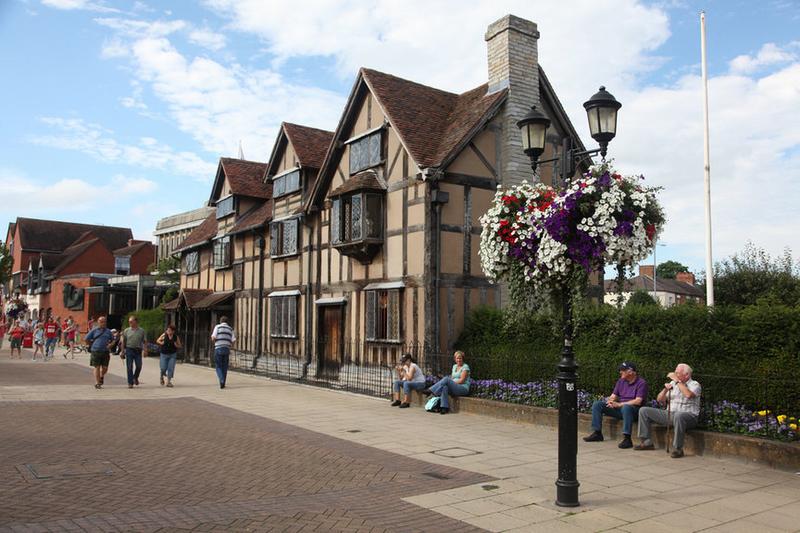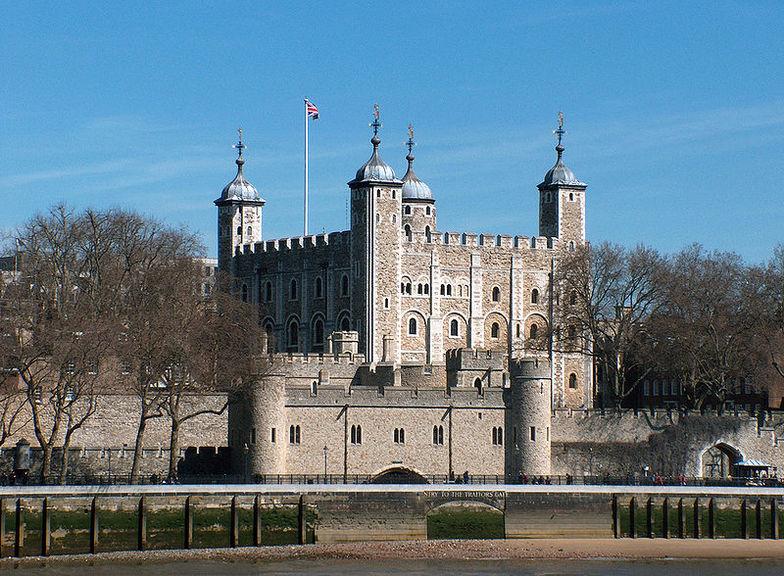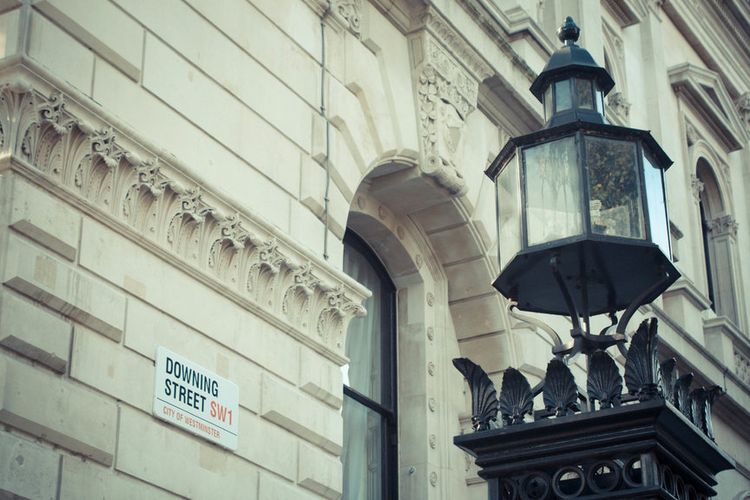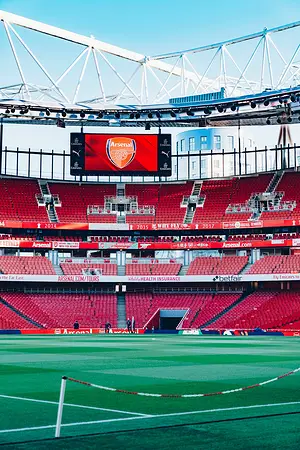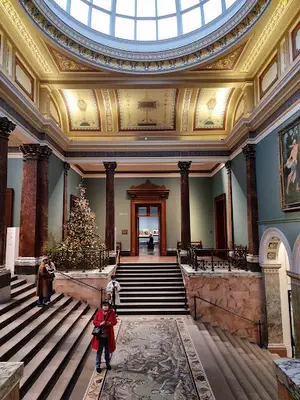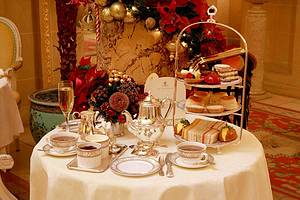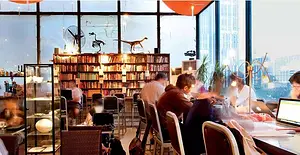Classic Self-Drive Tour in England and Scotland on the 9th
10 cities |
47 attraction(s) |
total distance 407
km
 TIPS
TIPS
Day1
Day2
Day3
Day4
Day5
Day6
Day7
Day8
Day9
Day1: Cambridge
6 attraction(s) ·
6 km
1
Cambridge University has a history of nearly 800 years and has produced over 60 Nobel laureates. It is composed of 31 colleges. Science and technology are the pride of Cambridge academically. Trinity College has produced Newton, Bacon, over 20 Nobel laureates, and 6 British Prime Ministers. St. John's College is famous for its Bridge of Sighs. King's College is the most renowned college at Cambridge University. Visiting fees vary for each college. To avoid inconvenience to faculty and students, visitors are advised to follow the college's designated visiting route.
1
km
2
The most famous attraction in Cambridge, established in 1441 by the then King of England, Henry VI, and named "King's College" after him. The college courtyard also features a bronze statue of Henry VI. The Gothic architecture is magnificent, with the King's College Chapel as its centerpiece. It was personally designed by the King and took nearly 100 years to complete. It is now a proud symbol of Cambridge and provides the most beautiful views from the lawn outside the chapel.
1
km
3
Located on the south side of King's College, the college was founded by Queen Margaret, the wife of Henry VI in 1448, and later by Queen Woodville, the wife of Edward IV in 1465. It is therefore known as "Queens" to represent the two queens. The college combines medieval and modern architecture, and its style is also very unique. It spans both sides of the River Cam, connected by the famous Mathematical Bridge.
1
km
4
The River Cam is a small river that surrounds the main city area of Cambridge. "Cam" means "raised" in English. The river forms a large "S" shape around the central campus of the University of Cambridge. It was called "Jianhe" (meaning "Jian River") by Chinese students from Fujian and Guangdong who came to study in Cambridge, as "Cam" is pronounced "Jian" in their dialects. The name "Cam" gained popularity thanks to Xu Zhimo's poem "Saying Goodbye to Cambridge Again". River Cam and River Granta are actually the same river, but locals refer to it as Granta. River Granta specifically refers to the section from Cambridge town to Grantchester, which is the upstream part of the river with winding paths and pastoral scenery. The downstream part is wider and calmer, with magnificent buildings of the University of Cambridge along the banks, known as the College Backs. When renting a boat to float on the river from the Queen's College Wharf, the boat owner will ask you "Granta or Colleges?" This means whether you want to float on the River Cam or go to a specific college's back lawn. When visiting Cambridge, it is a must to go punting on the river, enjoying the picturesque scenery on both sides and listening to the boatman's fascinating legends.
2
km
5
Inside St. John's College, on the Cam River, built in 1831, it connects the old court and the new court of the college. It is said that when Queen Victoria visited this bridge, she exclaimed: "So beautiful! So unique!" It is like a gallery bridge, with three levels: upper, middle, and lower. The lower level is a semi-elliptical bridge arch spanning the Cam River; the middle is a passageway, namely a long corridor. Unlike other long corridors, its surface is not flat but arched, and pedestrians have to go up and down slopes to cross the bridge. The two sides of the bridge are semi-enclosed with five pairs of symmetrical glass windows, protected by steel-reinforced cement frames, for lighting; the upper level is flat, similar to the bridge deck of a typical cement bridge, and the top surface is balanced with symmetrical tower-like decorations. The appearance of the entire bridge is light yellow.
2
km
6
Crossing the River Cam on the campus of the University of Cambridge, the Mathematical Bridge connects the campuses of Queen's College on both sides of the river. Its unofficial name is the Mathematical Bridge, while its official name is simply "Wooden Bridge". Designed by William Etheridge and built by James Essex in 1749, the Mathematical Bridge was reconstructed in 1866 and 1905, but its original design remained unchanged.
Day2: York
5 attraction(s) ·
5 km
1
The National Railway Museum is a museum located in Yorkshire, England. As part of the Science Museum Group, the museum tells the story of railways from the early 19th century to the present day, with a focus on the development and history of the British railway system and its impact on industrial development and society. The museum houses the largest collection of locomotives in the world, including the famous Flying Scotsman.
3
km
3
York Minster, also known as St. Peter's Cathedral, is the largest surviving medieval church in Europe and one of the most exquisite churches in terms of design and architectural art in the world. The church was originally built in 627 AD as a fully wooden structure but was later destroyed by fire during a civil war. In 1060, the Normans captured York and built the first Norman church, of which the foundation and basement can still be seen today.
1
km
4
Shambles Street can be traced back to the 14th century. It was once known for selling livestock and meat. Now, this street is lined with ancient buildings constructed in the medieval style, with plastered walls on wooden frames, and there are many boutique shops along the road. It is Diagon Alley in the Harry Potter films and the oldest and most well-preserved medieval street in England, where every brick and tile showcases the charm of the Middle Ages.
2
km
5
Clifford's Tower is located on top of a small hill and is one of the few remaining relics of York Castle. Visitors can climb to the top of the tower via a narrow spiral staircase and enjoy panoramic views of York. Inside the tower, there is also a scale model of the old York Castle. Nearby, visitors can explore the Castle Museum. In the year 1190, a violent riot took place at Clifford's Tower, as some Christian merchants, in an attempt to evade their debts to Jewish bankers, tried to destroy the Jewish community. Eventually, 150 surviving Jews sought refuge at the original site of Clifford's Tower and were tragically forced to commit suicide there.
Day3: Edinburgh
6 attraction(s) ·
6 km
1
Calton Hill is located in the east of Edinburgh's New Town and is a high point and scenic area of the city. The hill is home to many historic monuments and buildings, such as a Greek-style temple built in the early 20th century as a response to the Great Depression to create employment opportunities. It attracts crowds of tourists during sunrise and sunset.
1
km
2
The North Bridge was built between 1894 and 1897, spanning over Waverley Railway Station, connecting the Royal Mile in the south and Prince Street in the north. The sculptures on the bridge are exquisite. Many photographers capture it along with the Balmoral Hotel in a single photo.
1
km
3
As the name implies, Royal Mile is approximately one mile long and is the main thoroughfare of Edinburgh's Old Town. It includes many attractions, restaurants, bars, shops, and hostels, making it the perfect starting point to explore the history of Edinburgh. It connects two significant landmarks of Scottish history, Edinburgh Castle and the Palace of Holyroodhouse, and along the way, you can find memorable attractions and streets such as Castle Esplanade, St. Giles Cathedral, Lawnmarket, High Street, and Canongate.
2
km
4
Prince Street Gardens is a picturesque garden in Edinburgh, Scotland, serving as the border between the Old Town and the New Town. It is also one of Scotland's most famous garden landscapes. The garden features the Scott Monument, a 200-foot tall tower dedicated to the renowned Scottish writer Sir Walter Scott. Visitors can climb its narrow staircase of 287 steps to reach the observation deck at the top, from which they can enjoy panoramic views of Edinburgh city center and its surroundings. On sunny days, both locals and tourists like to relax and sunbathe on the wide lawns or benches in the garden.
3
km
5
Edinburgh's Old Town is perfect for walking, strolling along its winding streets, feeling the romance and grandeur of the medieval era. Unique shops, clean restaurants, and exciting street performances make this ancient and vibrant town irresistibly lovable.
1
km
6
Edinburgh Castle is a symbol of Edinburgh and even Scotland's spirit. Perched on top of an extinct volcano, it overlooks the city of Edinburgh. Every August, the Military Tattoo is held here, showcasing the grand and solemn atmosphere of Edinburgh Castle. Anyone visiting Edinburgh will not miss Edinburgh Castle, as it can be seen from various corners of the city center. The castle became a royal fortress in the 6th century and has since served as an important royal residence and national administrative center.
Day4: Glasgow > Lake District National Park
4 attraction(s) ·
253 km
1
George Square is the main square in Glasgow, named after King George III of the United Kingdom. It was built during the Victorian era and features several statues of notable figures from Glasgow and Scotland, such as the beloved Scottish poet Robert Burns and the inventor of the steam engine, James Watt. The central monument commemorates Sir Walter Scott, Scotland's first Scott monument in the UK. Surrounding the square are various Victorian-style buildings, including Glasgow City Chambers to the east, Queen Street Train Station to the north, and Queen Street to the west. The square has been featured in many films, including Brad Pitt's "World War Z". During Christmas time, George Square transforms into a public ice skating rink.
2
km
2
Glasgow Cathedral is the only medieval Gothic church in Scotland that has been preserved in its original form. Most other Gothic churches were destroyed during the Reformation period. The construction of this cathedral began in 1136 and is still ongoing today. It is much larger in comparison to the Sagrada Familia in Barcelona, which took more than 100 years to build. The cathedral is divided into a church area and a crypt, where the patron saint of Glasgow, Saint Mungo, is buried.
246
km
3
The largest lake in England, 13 miles long, located at the southern end of the Lake District. After the railway arrived here in the 19th century, it began to be open to a large number of tourists. It is the first stop for most tourists to the Lake District, so it is relatively commercialized. Windermere Lake is the largest lake in the entire Lake District, narrow and long, with a length of about 17 kilometers from south to north. It has a large number of "specialties" of the Lake District - goldeneye ducks, as well as a special fish called Windermere Char, whose history dates back to the Ice Age and was a traditional local delicacy.
5
km
4
Beatrix Potter World is located in the town of Bowness on the eastern shore of Windermere Lake. It recreates scenes from the author's books, including Peter Rabbit's garden, Mrs. Tiggy-winkle's kitchen, and Mr. McGregor's greenhouse.
Day5: Manchester
5 attraction(s) ·
10 km
1
Old Trafford Stadium (Manchester United Museum and Tour) is the most famous and popular football club in the world. Fans of Manchester United consider Old Trafford Stadium (9:30am - 5pm) as a sacred place and idolize the football stars who play here. Highly recommend the team tour, which includes experiencing the feeling of sitting in the stands, visiting the changing rooms, the players' lounge, and walking along the underground tunnel to the pitchside resting area.
5
km
2
Albert Square is a public square in Manchester city center, built from 1868 to 1877 and named in honor of Prince Albert. Prince Albert was the husband of Queen Victoria (reigned from 1837 to 1901) and there is a monument of Prince Albert on the square. Various festival activities are held here throughout the year.
1
km
3
The municipal hall building stands on Albert Square, and inside the building, various sculptures and elaborate decorations can be seen everywhere. At the top of the building, there is a majestic tower that reaches into the sky, standing at a height of 85 meters. Visitors can explore it on their own, but since it is the main administrative center of Manchester, a more detailed visit and understanding of the building can be obtained by joining a guided tour at the visitor center.
1
km
4
Manchester's Chinatown is large in scale and located between George Street and Faulkner Street. Here you can find a variety of domestically produced goods that are not available in other parts of Manchester.
3
km
5
The University of Manchester is the largest university in the UK in terms of student population. It has produced 25 Nobel Prize winners and Benedict Cumberbatch, also known as Sherlock Holmes, also graduated from here. The campus is located on both sides of Oxford Road. As you walk into the campus, you will be greeted by the massive "University of Manchester" sign at the Manchester Business School. Along Oxford Road, you will see the iconic "University Place" (often called the toilet building), the Whitworth Hall where graduation ceremonies are held, and the Alan Gilbert Learning Commons, a self-study building built with a budget of twenty million pounds. The university has consistently ranked in the top 30 worldwide and occupies nearly one-third of the area of Manchester.
Day6: Stratford Upon Avon > Cotswold
5 attraction(s) ·
66 km
1
This was originally the house of Shakespeare's parents John and Mary Shakespeare. It was purchased and restored by the Shakespeare Birthday Trust in 1847 to its original 16th-century appearance. It is a very quaint half-timbered residence and was the birthplace and childhood home of Shakespeare. It is now one of the most popular tourist attractions in the UK and receives 3.5 million visitors annually.
2
km
2
Shakespeare was born in Stratford-upon-Avon in 1564 and was buried here after his death in 1616. There is a commemorative half-length statue of Shakespeare here, which is a depiction of him during his creative period, in honor of the cultural treasures brought to us by this outstanding writer.
39
km
3
This town is built along the River Eye and has been documented to exist for over 1000 years. To the west of the town is a water mill built in the 19th century.
4
km
4
"The Venice of the Cotswolds". This town is crossed by the River Windrush. Many low stone arch bridges are built along the river, which is why Bourton-on-the-Water is called "The Venice of the Cotswolds".
23
km
5
Visit Cotswolds, if you can only choose one village, then come to Bibury! It fulfills all your imagination of the beauty of English countryside. Although it is not as commercialized as Bourton-on-the-water, it still preserves the ancient serenity and beauty of an English village. The houses here are at least four hundred years old, with rows of honey-colored brick cottages. Each household has its own unique and well-maintained garden. There are babbling brooks in front of the houses, where wild ducks happily play in the water. The most beautiful countryside in the world is in England, and the most beautiful countryside in England is right here.
Day7: Oxford
5 attraction(s) ·
8 km
1
Hertford Bridge, commonly known as the Bridge of Sighs, is a pedestrian bridge in Oxford, England. It crosses New College Lane and connects the north and south parts of Hertford College. Designed by Sir Thomas Graham Jackson, it was completed in 1914. Its unique design has made it a city landmark. Many places have bridges called the Bridge of Sighs, named after a similar covered bridge in Venice, Italy, but the author believes that this bridge more closely resembles the famous Rialto Bridge in Venice.
4
km
2
One of the largest colleges in Oxford, it is also the only college in the world that is also a cathedral. Christ Church Cathedral is the mother church of the Diocese of Oxford. Christ Church College was founded in 1546. Like its sister college at Cambridge, Trinity College, it is traditionally considered the most aristocratic college in the university. It has produced 13 British Prime Ministers, equal to the total of the other 45 colleges at Oxford and surpassing any single college at Cambridge, only slightly fewer than the total for Cambridge (15 individuals).
It is possible to stay inside. The University of Oxford has a visitor program, and interested visitors can stay in dormitories to experience the atmosphere of the school. The main target groups are students and parents who are interested in studying, but alumni revisiting and curious visitors are also welcome. Other colleges also have dormitories to choose from, but if you stay at Christ Church, you can have breakfast in the college hall the next morning. Reservation website: http://www.universityrooms.com/en/city/oxford/home
1
km
3
The Church of St. Mary is the cathedral of the University of Oxford, with a history of nearly a thousand years. It is a magnificent and magnificent building. It is often the first impression of Oxford for many tourists because it is right next to Gloucester Green Bus Station. This is a Perpendicular Gothic building, and standing on the spire provides a panoramic view of Oxford. The porch was built in 1637, and its spiral columns are a major innovation in British architectural history. The porch was left with scars from the war in 1645. In the early days, the Church of St. Mary was a shared church for all colleges, and all ceremonies, official meetings, and exams were held here. Later, the activities of various colleges became more independent, and the role of the church gradually weakened. In the famous melee between the university students and the townspeople in the 13th century, the king ruled that the townspeople compensate for the university's losses and bear the university's expenses for the next 500 years. Therefore, on the day of the Annual May Morning Ceremony, a delegation of Oxford townspeople will come to the church to hand over the compensation to the respected members of the university.
4
km
4
Trinity College is a college of the University of Oxford, established in 1555. It is located on Broad Street in Oxford, between Balliol College and Blackwell's bookstore, across the street from Turl Street. It is surrounded by iron railings instead of walls, and its unique blue doors make it more open and accessible in appearance compared to other colleges in Oxford. The college has produced three British Prime Ministers and is ranked second along with Balliol College.
1
km
5
The Bodleian Library was opened in 1602 and is the oldest library in Europe, and the second largest in the UK after the British Library. It consists of three main libraries of the University of Oxford, including the Old Bodleian Library, the Radcliffe Camera, and the New Bodleian Library. The Old Bodleian Library, established in 1602, is one of the oldest libraries in Europe. According to the memoirs of Yang Jiang, the wife of Qian Zhongshu, Qian Zhongshu called this library "Bodley" or "the Bod". You can visit the library located in the Divinity School, where the magnificent medieval library scenes in Harry Potter were filmed.
Day8: London
6 attraction(s) ·
45 km
1
One of the official residences of the Queen of England, and the largest inhabited castle in the world. The current Queen spends a lot of time living here and frequently engages in various official and private activities. Whenever the Queen is in the castle, the royal flag is raised. Windsor Castle is divided into three areas: Upper, Middle, and Lower Ward. The Upper Ward includes the State Apartments and the Dolls' House, while the Middle Ward features the Round Tower surrounded by the Rose Garden. The Lower Ward includes the Gothic-style St. George's Chapel. In addition to Windsor Castle, there are many other places worth visiting in the town of Windsor, such as the famous Eton College and Royal Ascot. The nearby town of Bray is also a culinary destination with two Michelin three-star restaurants, despite its small size.
36
km
2
Buckingham Palace is the royal palace of the United Kingdom and serves as the Queen's office and residential place in London. It is also the headquarters of the royal administration and one of the few remaining royal palaces in use in the world. It is a popular location to witness the Changing of the Guard.
The palace is located within the City of Westminster, to the west of St. James' Park in London. It was originally built for the Duke of Buckingham in 1703, hence its name, which originally meant "someone else's home".
The State Rooms and Ballroom in the palace are grand and luxuriously decorated, housing many precious collections. However, they are only open to the public for visits to 19 State Rooms during the summer when the Queen is in Scotland. Each day in the summer and every other day in the winter, the palace hosts the spectacular Changing of the Guard ceremony at 11:00 am, allowing visitors to secure favorable positions for viewing.
When the Queen is present, the royal flag flies outside the palace.
2
km
3
Westminster Palace, also known as the Houses of Parliament, is the home of the UK Parliament (including the House of Commons and the House of Lords). Located on the west bank of the River Thames, it is situated close to other government buildings within the Whitehall area. Westminster Palace is a prime example of Gothic Revival architecture and was designated as a UNESCO World Heritage Site in 1987. The famous Big Ben is located in the clock tower at the northwest corner.
The building consists of around 1,100 individual rooms, 100 staircases, and 4.8 kilometers of corridors. Although the palace today is largely a result of 19th-century restorations, it still retains many historical features from its original construction, such as Westminster Hall (dating back to 1097), which is used for significant public ceremonial events, such as lying in state.
Big Ben, nicknamed for the clock tower of Westminster Palace, is one of the iconic landmarks in London. The tower stands at 95 meters tall, with a bell diameter of 9 feet and a weight of 13.5 tons. It chimes every 15 minutes, producing the distinctive Westminster chimes. The clock was completed on April 10, 1858, and is the largest clock in the UK. The tower itself is at least 320 feet (97.5 meters) in height, and the minute hand is 14 feet (4.27 meters) long. Big Ben is wound up manually, and during parliamentary sessions, the clock face is illuminated, chiming every hour.
3
km
4
Many people choose to overlook the panoramic view of London from the London Eye. This giant Ferris wheel, located on the banks of the River Thames, stands at a height of 135 meters. It officially opened to visitors in the year 2000, the millennium, and has 32 fully enclosed capsules, each capable of carrying around 20 people. It takes about half an hour to complete one rotation. The juxtaposition of this modern marvel and the surrounding historic architecture brings new vitality to ancient London. It is best to choose a clear and sunny day and book tickets online in advance, as this popular attraction in London always has long queues every day.
5
km
5
One of the landmark buildings in London, named after its location near the Tower of London, is a bascule bridge spanning the River Thames, which opened in 1894. The lifting mechanism of Tower Bridge used to be steam-powered but has since been changed to electric, although the original mechanical structure is still preserved for visitors. If you're lucky, you can see the spectacle of Tower Bridge opening to allow tall ships to pass through.
1
km
6
The official name of the Tower of London is "Her Majesty's Palace and Fortress, The Tower of London". It has served as a fortress, an arsenal, a treasury, a mint, a palace, an execution site, a public records office, an observatory, a refuge, and a prison. Queen Elizabeth I was imprisoned here during the reign of her sister, Queen Mary I. The Tower of London was last used as a prison during World War II, with Rudolf Hess being held there. It was designated as a UNESCO World Heritage site in 1988. In 2012, a special exhibition of crown jewels was held here to commemorate the Queen's Diamond Jubilee.
Day9: London
5 attraction(s) ·
12 km
1
Westminster Abbey, also known as Westminster Cathedral, is adjacent to the Houses of Parliament. It is not only the Church of England's place of worship, but also the venue for the coronation of kings and weddings of royal members. Prince William's wedding was held here in 2011. It can be said to be the highest church in the United Kingdom. Apart from members of the royal family, many famous people are buried here, including Newton, Darwin, Churchill, and others. Some say that people visit Westminster Abbey not to pay homage to the monarch, but to those who have made contributions to the country. The architecture of the entire church is representative of Gothic style, both splendid and solemn, with sunlight shining through colorful stained glass. Westminster Abbey was first built in the 10th century. Since William the Conqueror's coronation in 1066, the abbey has been the church for royal coronations. Over the past thousand years, many famous Britons have been buried here for future generations to admire and remember. For hundreds of centuries, millions of worshipers have come here to attend services.
1
km
2
10 Downing Street, is a Georgian-style building. Traditionally the residence of the First Lord of the Treasury, it has since become the official residence of the British Prime Minister after the role was combined. Its simple design with a black wooden door and the white numeral "10" has become a well-known symbol.
Besides serving as the official residence and office of the Prime Minister, 10 Downing Street is also where the Prime Minister's secretary, assistants, and advisors work. However, tourists are generally not allowed to approach the door of Number 10 and can only visit from behind iron railings on either side of Downing Street.
4
km
3
St. Paul's Cathedral in London is an Anglican cathedral, the residence of the Bishop of London, and the mother church of the Diocese of London. It is located on Ludgate Hill, the highest point in the City of London, and can be traced back to the original church built in 604 AD. The current cathedral, designed and built by the renowned British architect Christopher Wren over a period of 45 years in the late 17th century, is a representative of Baroque architecture. It is the second largest cathedral in England, behind only Liverpool Cathedral. Its dome, in particular, is spectacular, being the second largest in the world and the tallest on the planet. St. Paul's Cathedral is one of the most famous attractions in London, dominating the city's skyline for over 300 years. Until 1967, it was the tallest building in London, reaching a height of 111 meters. The cathedral has hosted ceremonies such as the funerals of Lord Nelson, the Duke of Wellington, Sir Winston Churchill, and Margaret Thatcher, as well as the coronation of Queen Victoria and the wedding of Prince Charles and Princess Diana. It is one of the two most worthwhile churches to visit in London. Climbing the 271 steps to the top of the cathedral allows visitors to overlook London, and they can also enjoy traditional English afternoon tea at the cathedral's café.
3
km
4
The British Museum is one of the world's most famous museums with nearly eight million items in its collection. There are treasures from all over the world, from Egyptian mummies to Chinese antiquities, and it's all free to visit. If you have time, spend a whole day here, but if you only have 10 minutes, head straight to the mummy exhibition! Don't forget to explore the treasures in the Chinese section as well. The Great Court with its impressive glass roof is the main entrance, and the central circular reading room used to be part of the British Library until its relocation in 2000. It's recommended to arrive early to avoid the crowds, and you can also rent an audio guide to learn more about the history behind each exhibit.
6
km
5
Hyde Park is the largest of the four royal parks in London, separated by a serpentine lake. To the north is the Bayswater Road, to the east is Park Lane, and to the south is Knightsbridge. Surrounding areas include Paddington, Mayfair, and Belgravia. To the west, Hyde Park is connected to Kensington Gardens. A major road runs from Kensington Palace through Kensington Gardens, Hyde Park, Hyde Park Corner, Green Park, and finally to the gates of Buckingham Palace. Since 1728, Kensington Gardens has been separated from Hyde Park. Hyde Park covers an area of 142 hectares, while Kensington Gardens covers 111 hectares, making a total area of 253 hectares. The parks are planted with large lawns, lime, maple, and oak trees. During the day, these two parks seamlessly blend together, but Kensington Gardens closes at dusk while Hyde Park remains open from 5 am to 3 am. To the southeast of the park is Hyde Park Corner, Green Park, St. James's Park, and Buckingham Palace Gardens. In the 1920s, with the expansion of Buckingham Palace, the entrance to Hyde Park Corner, also known as the "Grand Entrance" or "Apsley Gate," was redesigned by Decimus Burton and opened in 1828. Originally, Hyde Park Gate and the Wellington Arch were a combination, but in 1883, the arch was moved eastward. A wider road was built between the two gates, forming the current traffic roundabout. The main attractions in the park include Speaker's Corner, the Serpentine Ride, and the Princess Diana Memorial Fountain. On sunny days, Hyde Park is a favorite recreational spot for Londoners, with luxury hotels and restaurants scattered around the park. If you have the opportunity to visit Hyde Park, you may not encounter radical speakers, but you will definitely be inspired by the leisurely lifestyle of the British people, and you may even come across a few members of the royal family walking their dogs or riding horses in the park.












